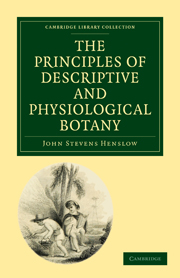Summary
(130.) Taxonomy. — We have no space to devote to any extended review of the various methods and systems which have been proposed for the classification of plants; and it is not necessary for us to explain the uses which a systematic arrangement of natural bodies is intended to serve. This subject has been thoroughly and sufficiently discussed by Mr. Swainson, in our sixty-sixth volume. We may just remark, that the number of species already named and classified in works of botany, amounts to about 60,000; and this fact alone must satisfy us, how necessary it is that botanists should possess those means of intercommunication, which a systematic classification alone can afford — whenever they wish to announce the discovery of a new species, or to refer, with certainty, to one which has been previously noticed. But, if we have the higher object in view, of searching after the laws and principles which regulate the structure and fix the properties of plants, then it is a necessary and immediate consequence of every discovery of this kind, that we thereby obtain a nearer conception of those affinities by which plants approach, and of those differences by which they recede from each other; and this, in fact, amounts to a closer insight into that hitherto undiscovered system, or plan, upon which we must feel satisfied that the Author of nature has proceeded in creating all natural objects.
- Type
- Chapter
- Information
- The Principles of Descriptive and Physiological Botany , pp. 135 - 154Publisher: Cambridge University PressPrint publication year: 2009First published in: 1835



